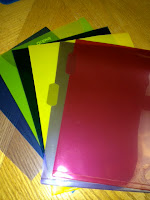This week I wanted to tell you about my online store, Good Sensory Learning. I’m Dr. Erica Warren, and I established this site so I could share all the materials that I have created over the last 20+ years as a learning specialist and educational therapist. When I first began my private practice, Learning to Learn, I had great difficulty finding fun and multisensory materials for my students that were effective and engaging. So back in 2005, I made it my mission to design and distribute high-end, remedial products as well as memorable, motivating lessons that bring delight to learning. If you would like to try a free sampling of my activities , CLICK HERE . How Are the Products Organized at Good Sensory Learning? You can download my Free Printable Catalog or you can browse the site using the grey “search all products” bar in the top right of any page with keywords such as dyslexia, working memory, and executive functioning. What’s more, drop down menus in the red banner allow you t...
You can create your own overlays by using whole sheets or cutting strips of transparent, colored report covers, dividers or overhead projector film.
Step one: Buy a variety of colorful transparent sheets. You can use -
- color, transparency film
- color, transparent report covers (plastic)
- color, transparent dividers (plastic)
 Step two: Everyone is different. Let your students try out the different colors and see which one they like the best.
Step two: Everyone is different. Let your students try out the different colors and see which one they like the best. Step five (optional): For those students that get overwhelmed by to many words on a page, you can place duct tape around the edge of the overlay to block out competing lines of text.
Step five (optional): For those students that get overwhelmed by to many words on a page, you can place duct tape around the edge of the overlay to block out competing lines of text. At the end of the activity, even if a few of your students don’t find color overlays helpful, they will still have a useful book mark.
For more great reading remediation ideas, check out my reading games! You can even get a free sample game!!
http://goodsensorylearning.com/reading-games.html
RELATED: Reading Instruction
Enjoy!
Cheers, Erica
Dr. Erica Warren is the author, illustrator and publisher of multisensory educational materials at Good Sensory Learning and Dyslexia Materials. She is also the director of Learning to Learn and Go Dyslexia, in Ossining, NY. To learn more about her products and services, you can go to https://godyslexia.com/, www.goodsensorylearning.com, www.dyslexiamaterials.com & www.learningtolearn.biz




This is a great idea! I think I could use these on the light table for my toddlers and preschools. Think they would work being layered to learn about color mixing?
ReplyDeleteBrilliant idea Ashley!! That sounds like a lot of fun!!
ReplyDeleteThanks for this post. I'm sharing it!
ReplyDelete